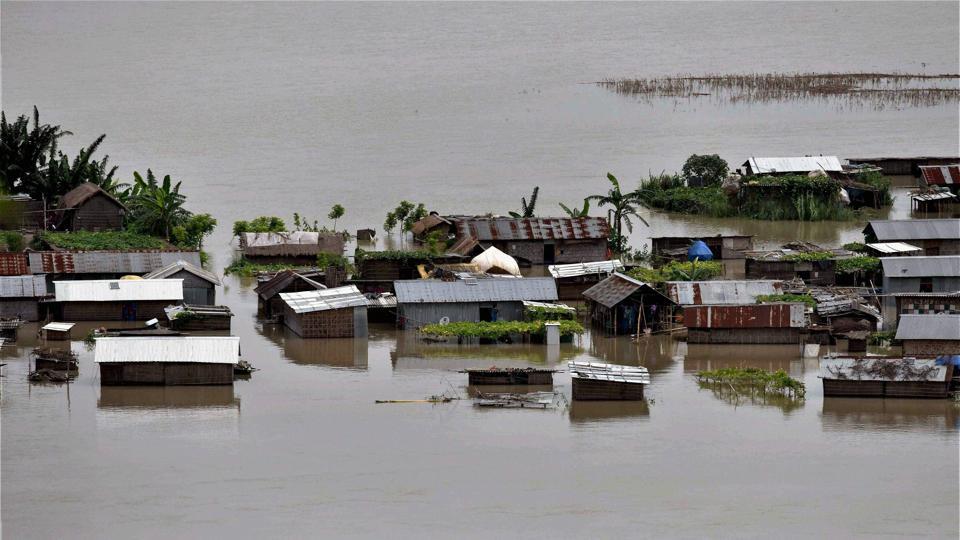
The principal aim of the Paris Agreement as laid down under its Article 2 is to hold the “increase in the global average temperature to well below 2 °C above pre-industrial levels.” Article 2 also stresses upon, inter alia,“Increasing the ability to adapt to the adverse impacts of climate change.” The Paris Agreement is, in fact, replete with Articles that exhort the importance of and need for adaptation in order to deliver climate justice to the world’s poorest and most vulnerable. It has renewed focus on this woefully neglected aspect of theinternational climate change regime.
The Intended Nationally Determined Contributions (INDCs) submitted by India to the Secretariat of United Nations Framework Convention on Climate Change recognise that both mitigation and adaptation are equally important in the fight against climate change. The adaptation aspect of the INDCs focusses on “enhancing investments in development programmes in sectors vulnerable to climate change, particularly agriculture, water resources, Himalayan region, coastal regions, health and disaster management.”
Timely and suitable adaptation to adverse effects of climate change is crucial for a country as vulnerable as India. According to a recently released report –Global Climate Risk Index 2018 – India is ranked as the world’s sixth most vulnerable country. 85 % of the country is susceptible to one or more hazards. Additional factors such as poverty, illiteracy, and lack of infrastructure contribute to the country’s low adaptive capacity.
Given its exposure to climate change, expanding population, and the growing internationalattention on adaptation,Indiabegan adopting national and sub – national climate action plans in the past decade. The National Action Plan on Climate Change (NAPCC) was created in 2008. It consists of eight Missions related to solar energy, energy efficiency, sustainable habitats, water, Himalayan ecosystems, green India, sustainable agriculture, and strategic knowledge on climate change.Subsequently, several states havealso set up and implemented State Action Plans on Climate Change. Depending on their circumstances and priorities, different state governments have focussed on mitigation or adaptation. A few lay equal emphasis on both.
Expert analysis of these missions and action plans reveals a nebulous approach to adaptation. The Missions follow a business-as-usual approach and mention each and every possible dimension of environmental damage and climate change. However, there are not many concrete and clear goals that these plans must accomplish. The National Mission on Sustainable Agriculture, for instance, pre-supposes the existence of large farms and places much reliance on technology. It does not specify how agriculture must be made resilient to floods and droughts. There are no regional or area appropriate guidelines on how small and ill equipped farmers should adapt to climate change, such as water-saving and water harvesting techniques.Similar shortcomings plague theother Missions. The Missions on Sustainable Habitats and Himalayan Ecosystems fail to give adequate attention to the poor and vulnerable. The National Water Mission prioritises large scale water projects meant to transfer water over long distances. It fails to consider the crucial issue of glacial meltdown and changes in snow and rainfall patterns in the context of climate change. Irrigation for agriculture is also not addressed correctly.
Furthermore, most action plans do not take into account changes in climate in the future and risks arising therefrom. The recent floodingfrom monsoon rains which affected several states and millions of people demonstrated the lack of preparedness. It also indicates that the plans set up ten years ago are not suited to present climatic conditions and will also need to be scaled up in order to meet future challenges. The situation is also complicated due to inadequate coordination between departments under different ministries and several planning bodies. Additionally, although climate action is mainstreamed in development planning, the latter could threaten to subsume the former.
A new analysis by think tank IFMR LEAD evaluates the implementation of the Missions under the NAPCC. It shows mixed results with some Missions performing well and as per the initial planning whereas others require stricter compliance and restructuring. A paper by faculty at the Indian Institute of Management, Ahmedabad supports the findings. It assesses the adaptation gap in India’s adaptation measures and suggest that ‘new and robust adaptation strategies’ will be needed in core sectors at risk such as water, agriculture, and public health. It also recommends new methods to assess the gap at local levels.
Adaptation has historically suffered from a lack of finance. Funding for adaptation is very less in comparison to mitigation. In 2015, theIndian government created the National Adaptation Fund on Climate Change (NAFCC) which providedRs.350 crores for the years 2015-16 and 2016-17. An estimated amount of Rs.181.5 crores was earmarked for the current year. This is but a fraction of the estimated costs of adaptation required by India to adequately respond to climate change.Unfortunately, the recently concluded climate talks at Bonn, Germany also did not end with satisfactory contributions by developed countries towards adaptation finance. A business-as-usual scenario seriously threatens to raise the temperatures by 3 to 4 degree Celsius by the end of the present century with unimaginable consequences for vulnerable countries such as India.
Zeenat Masoodi is a Lawyer living in Srinagar
Email: [email protected]







































